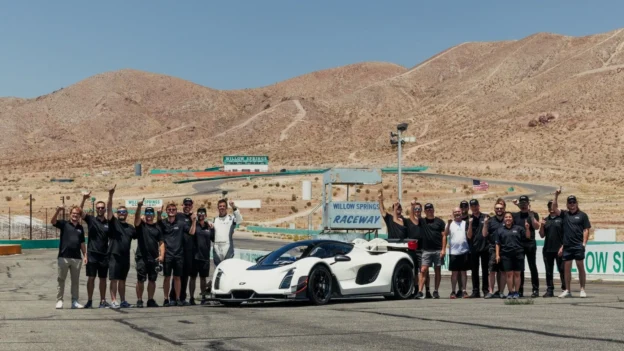The U.S. firm Czinger has made a strong mark on the automotive scene by achieving five lap records on as many circuits in California during an unprecedented five-day campaign. The Czinger 21C, a two-seater hypercar assembled using 3D printing technologies, has 3D printing and designed by artificial intelligence, traveled more than 1,600 kilometers of public roads to demonstrate its endurance and performance in real-world conditions.
Technology and performance at the limit
The 3D printed hypercar achieved these records, it is the same one that traveled more than 1000 miles (1609 km) on public roads in California to move between circuits, demonstrating its versatility as a street legal car. This was achieved thanks to:
- It is powered by an internally manufactured 2.9-liter twin-turbo V8 engine and a 4.4 kWh battery pack, together delivering 1350 horsepower.
- Your 3D printed components components reduce weight, increase strength and reduce development times.
Short film shot by the company to document the human component behind the record, from preparation to logistical challenges. Source: Czinger Vehicles.
Disruptive manufacturing technology
Czinger does not follow traditional methods, but bases its production process on the use of supercomputing, artificial intelligence, 3D printing and robotics to design and manufacture lighter and stronger components. This technology was initially developed by its parent/sister company, Divergent Technologies.
Impact of Czinger 21C Records
This project was led by Ewan Baldry, head of engineering, along with a team of eight specialists, as a strategy to demonstrate and validate their unique production process through the performance of their technology in real-world environments. For a young company without decades of automotive heritage, achieving this level of performance and endurance with the Czinger 21C is a powerful way to establish credibility and demonstrate that their approach works in practice.
Source: New Atlas.


